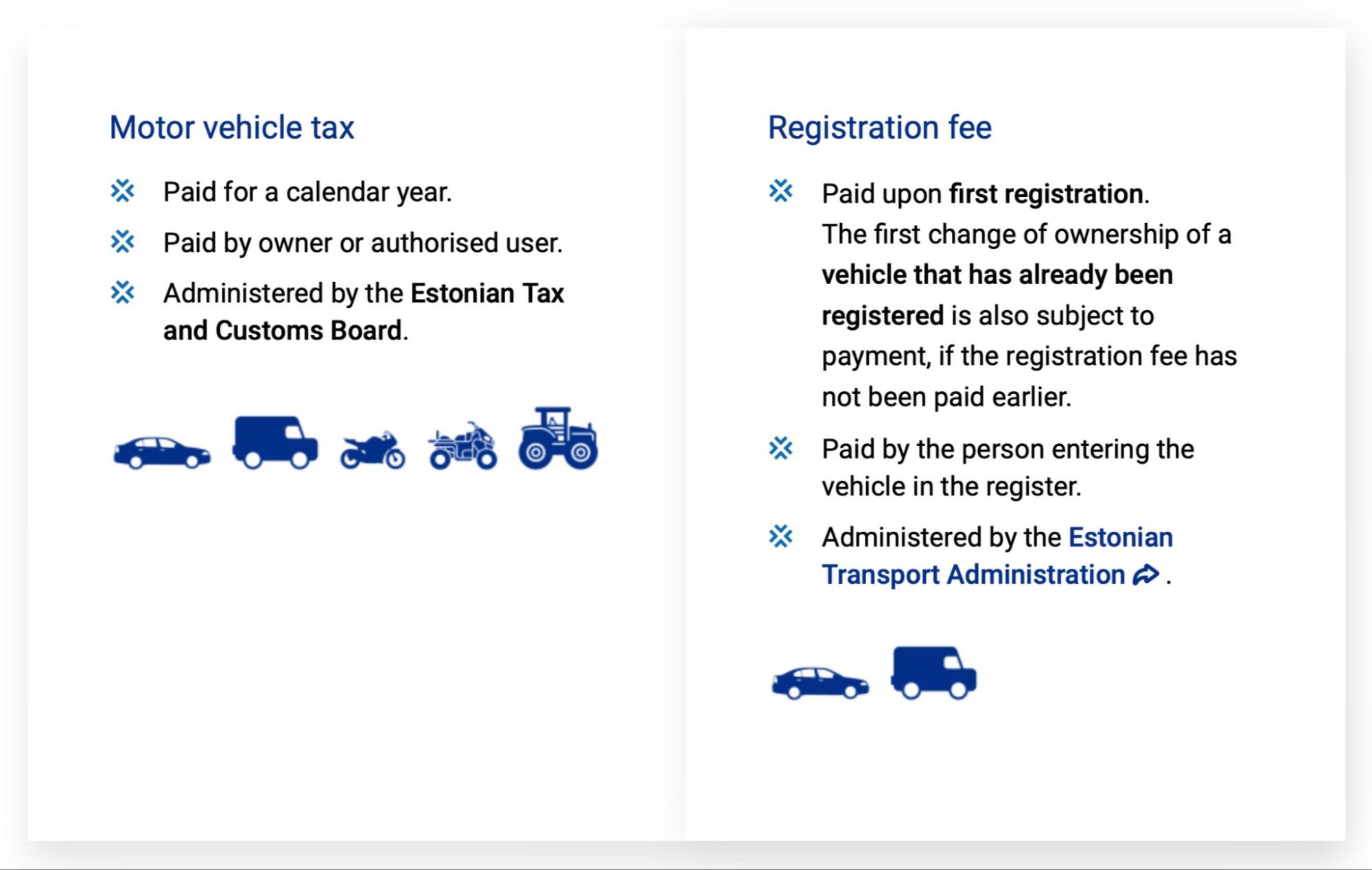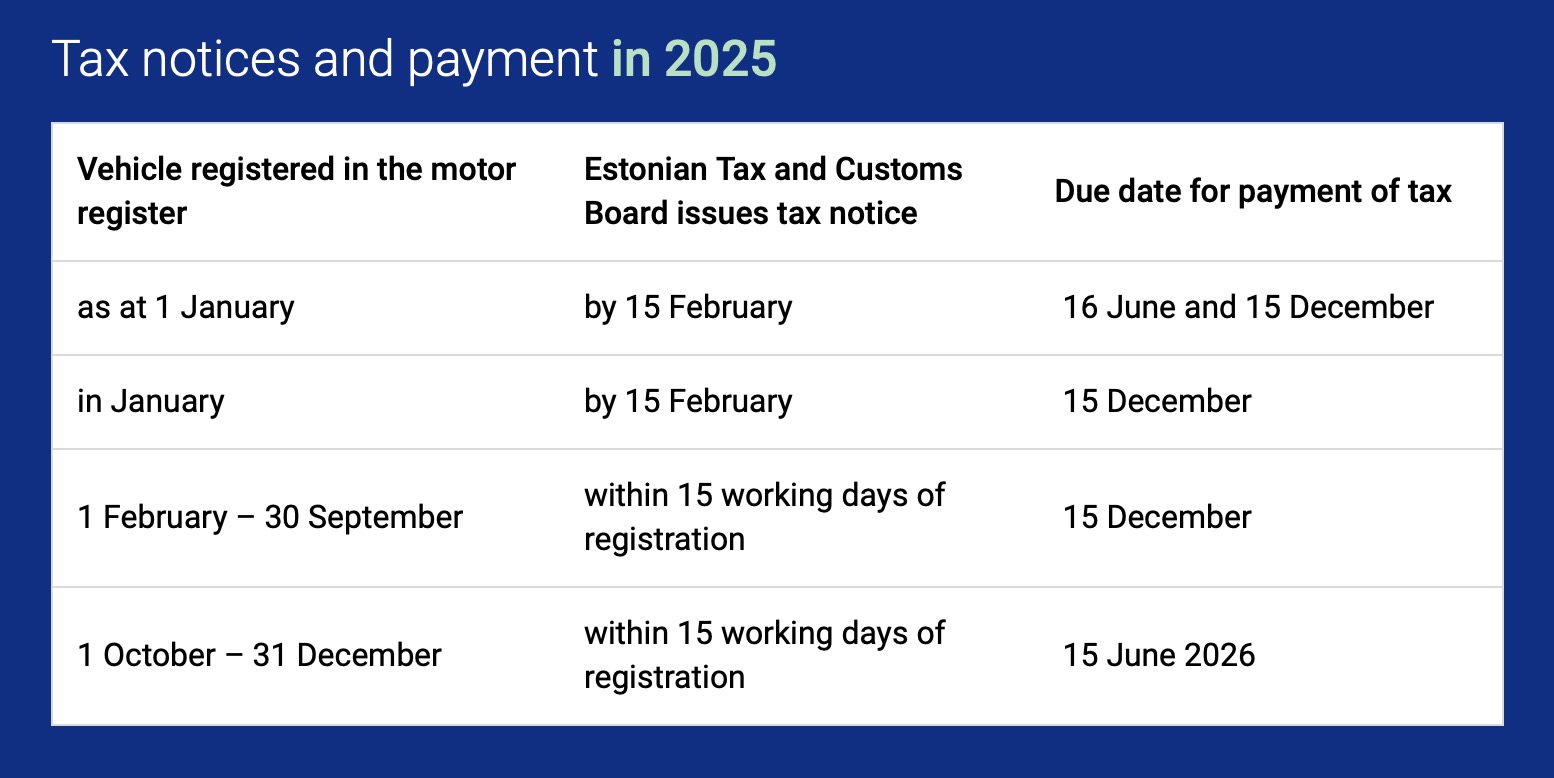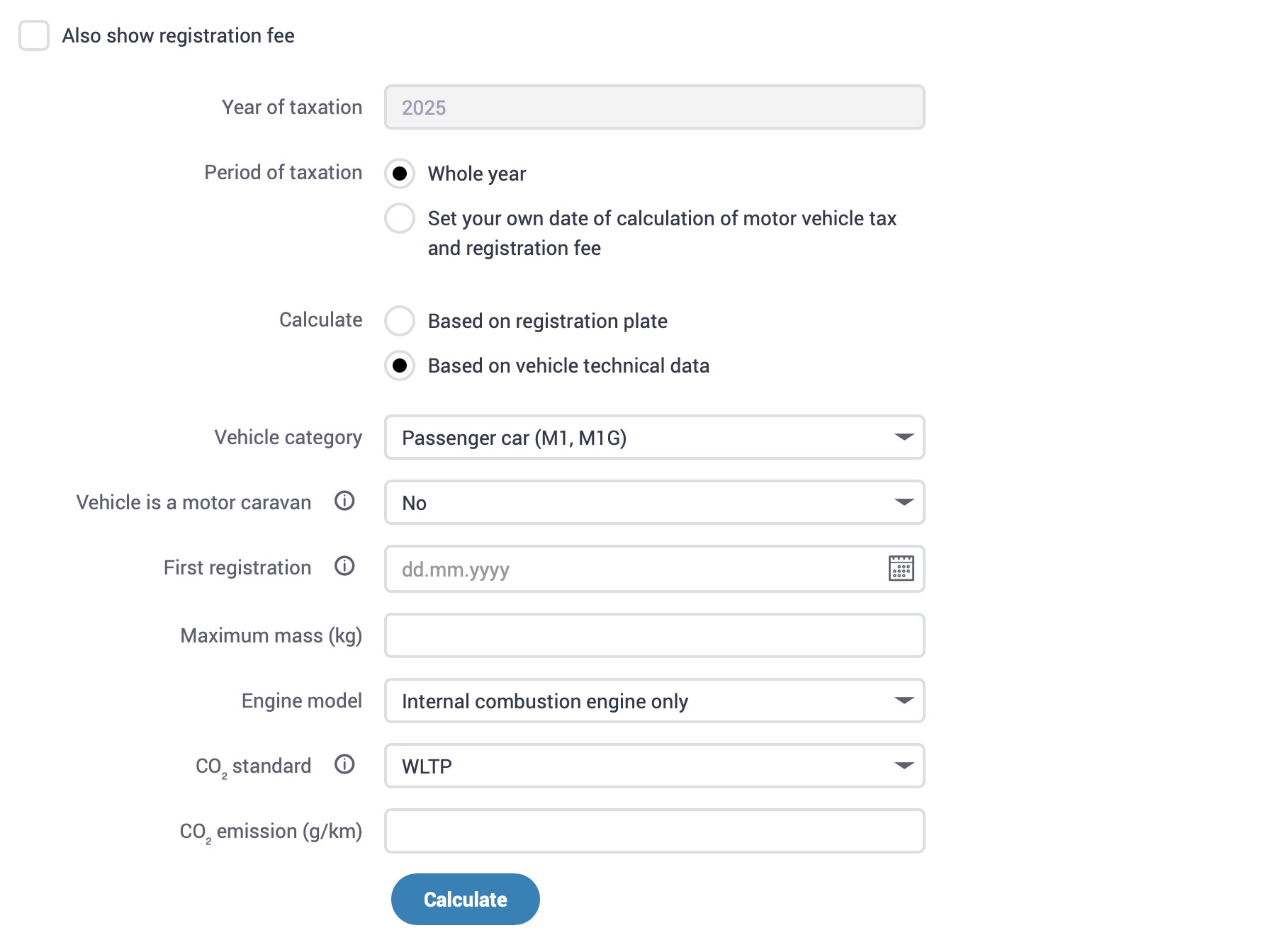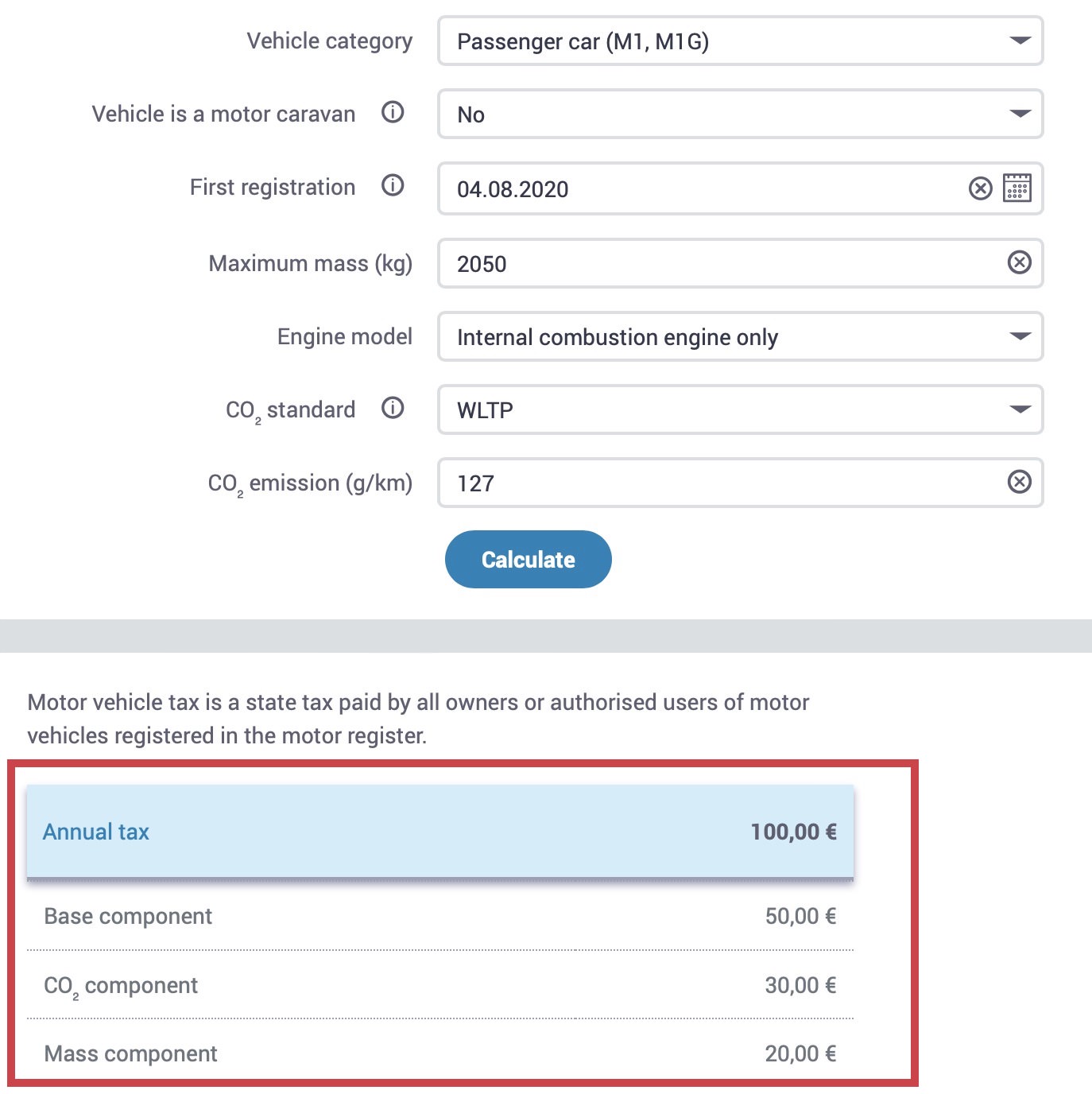- Blog
- Everything You Need to Know About Estonia’s New Motor Vehicle Tax
Everything You Need to Know About Estonia’s New Motor Vehicle Tax
Learn how Estonia’s new motor vehicle tax works in 2025 and what it means for car traders. Get clear info on annual tax, registration fees, and how to calculate them.
Key takeaways
- Estonia introduced a car tax system for the first time in 2025, adding both an annual vehicle tax and a one-time registration fee for most vehicles.
- The registration fee applies to all cars registered for the first time in Estonia or changing ownership, and the annual tax is charged every year based on emissions.
- You can calculate both taxes using the official Vehicle Tax Calculator if you have the car’s basic technical details.
- Knowing how the tax works helps you set your prices smarter and answer buyer questions clearly, especially when they ask about total ownership costs.
Until 2025, Estonia was one of the few European Union countries without a general car tax. That’s right: there was no annual tax on vehicle ownership and no CO₂-based registration tax for new or used cars.
This changed on January 1, 2025, when Estonia introduced a new motor vehicle tax system to align with EU practices and support environmental goals.
So, let’s see how the new Estonian motor vehicle tax works and what it means for your business and customers.
Quick overview of the new tax system
The new motor vehicle tax consists of two components: the annual car tax, and registration fee.

Image source: Estonian Tax and Customs Board
- The annual motor vehicle tax is a yearly payment for owning a car (or van, motorcycle, etc.) registered in Estonia. It’s based on factors like emissions, weight, and vehicle type, just like in other EU countries.
- Registration fee is a one-time payment that’s paid when a vehicle is either registered in Estonia for the first time or sold to a new owner (if the fee hasn’t already been paid).
As a car trader, you usually won’t have to pay either part of the new car tax yourself.
Still, it’s important to understand how the system works, since your customers will be paying it, and you’ll want to factor both the annual car tax and the registration fee into your pricing strategy.
New annual tax - how does it work?
We’ll now take a look at each of the tax elements separately.
Motor Vehicle Tax - Annual payment
The annual tax applies to different categories:
- Passenger cars (M1, M1G)
- Vans (N1, N1G)
- Motorcycles / ATVs (L3e, L4e, L5e, L6e, L7e)
- Off-road vehicles (MS2)
- Tractors (T1b, T5)
- Tractors (T3)
The tax is paid in two parts: the first half is due by June 15, and the second half by December 15. You can see the full payment schedule in the table below.

Image source: Estonian Tax and Customs Board
Vehicle registration fee - One-time payment
As the title suggests, this fee is related to vehicle registration. You have to settle the registration fee before the registration process can be completed.
The registration fee is mandatory:
- When a vehicle is registered for the first time in Estonia (new or imported), or
- When a vehicle changes ownership for the first time (if the registration fee hasn’t already been paid)
Calculating your Motor Vehicle Tax - variables and components
The tax calculation varies based on vehicle type, age, emissions, and weight.
You can get an accurate estimate of the tax by using the official Vehicle Tax Calculator.
In the calculator, you'll be asked to fill in key technical details, such as vehicle category, the date of first registration, its maximum weight, engine type, and CO₂ information.

Image source: Motor Vehicle Tax Calculator
Based on your information, the calculator then provides a full breakdown of your expected tax.
For instance, this is what the tax would look like for a Volkswagen Passat 2.0 TDI (2020):

Regardless of whether you're selling to a business or a private customer, it's a good idea to calculate the expected car tax in advance and inform the buyer, so there are no surprises later.
Exemptions and special cases
Certain vehicles are exempt from both the annual tax and registration fee:
- Emergency vehicles
- Diplomatic vehicles
- Vehicles used for defense activities
What does the new Estonian car tax mean for your business?
As we’ve seen, car owners are the ones paying the car tax, not car traders. Still, knowing how to estimate the tax helps you in several ways.
First, it’s essential for your pricing strategy. When importing used cars, you need to factor the registration fee into your overall pricing.
Next, taxes directly affect buyer decisions. If a customer is choosing between two similar vehicles, they are more likely to choose the one with a lower annual tax or registration fee. Explaining and comparing those costs can help you guide the sale more effectively.
And finally, it positions you as a knowledgeable, trustworthy seller. Being able to clearly explain how Estonia’s car tax system works shows that you’re informed and looking out for your buyer’s interests.
Our extensive inventory includes various makes and models to suit all your needs, sourced directly from reputable European leasing companies, short-term rental companies, and dealerships:

